|
|
 |
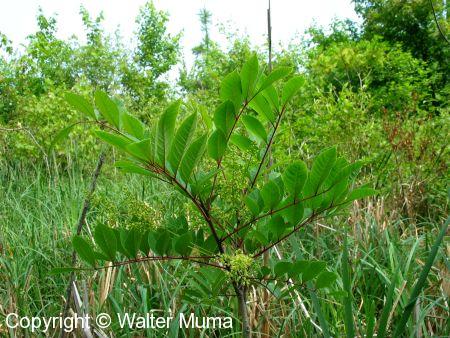
|
 |
This is a photo of the top of a small Poison Sumac shrub. It shows the upward orientation of the leaflets, a distinctive feature. |
|
 |
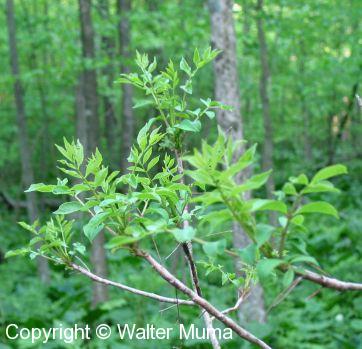
|
 |
The leaves just starting to come out in the spring. Like other sumacs, it leafs out much later in the spring than many other trees and shrubs. |
|
 |
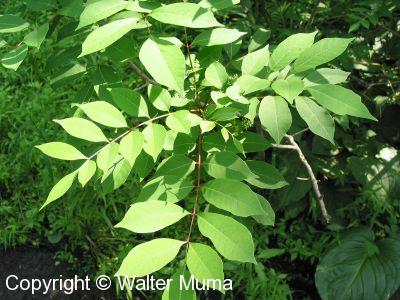
|
 |
A view from above of a smaller Poison Sumac shrub showing the leaves. |
|
 |
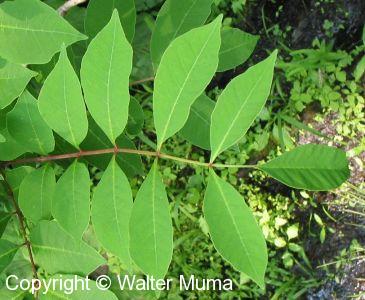
|
 |
Close-up view of its compound leaf. |
|
 |
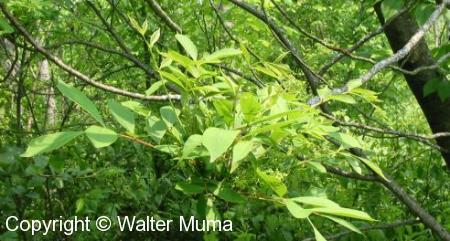
|
 |
A cluster of leaves and developing flowers. Note the sumac-like "hang" of this branch (it comes into the photo from the upper right corner). |
|
 |
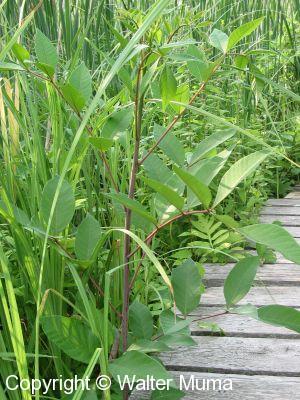
|
 |
This young Poison Sumac shows how the leaflets often grow at an upward angle. |
|
 |
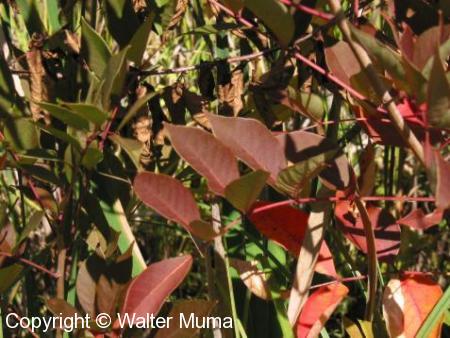
|
 |
The leaves turn brilliant red in the fall. Very pretty!
**But don't be tempted to collect them to add to your Thanksgiving bouquets! |
|
 |
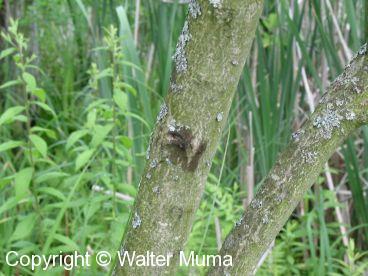
|
 |
Close-up view of the bark. |
|
 |
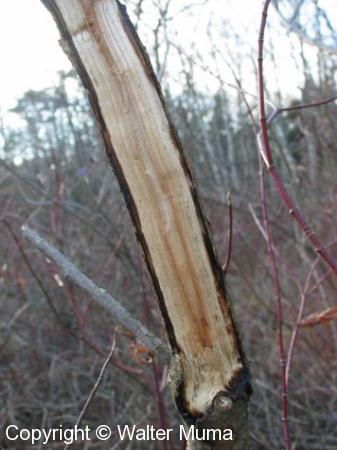
|
 |
Poison Sumac pith. |
|
 |
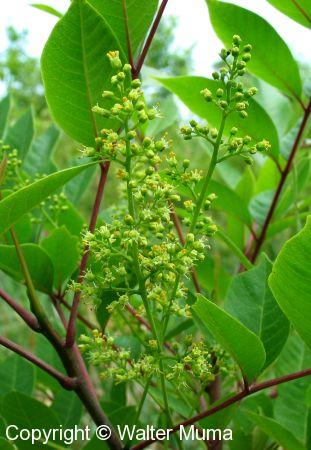
|
 |
Close-up photo of the flowers starting to bloom. |
|
 |
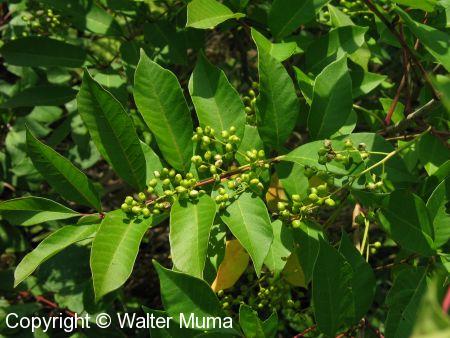
|
 |
Here are newly formed, unripe Poison Sumac berries. Later, as they mature, they will hang down. |
|
 |
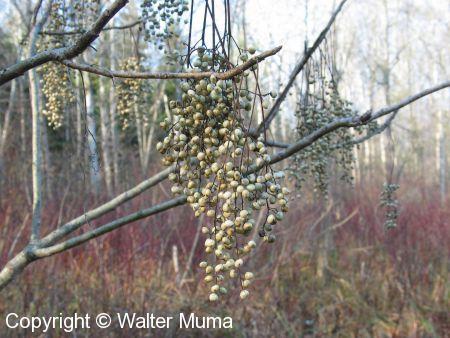
|
 |
Poison Sumac berries are hard and white, and hang from thin stalks in clusters. They persist into the winter, gradually falling as winter progresses. Birds and squirrels like to eat them. |
|
 |
|
|
 |
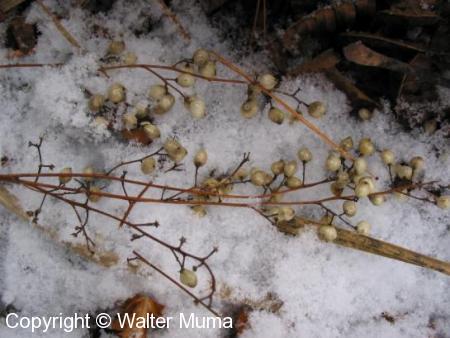
|
 |
A closer view of the berries. These were clipped from the tree by a squirrel or bird. |
|
 |
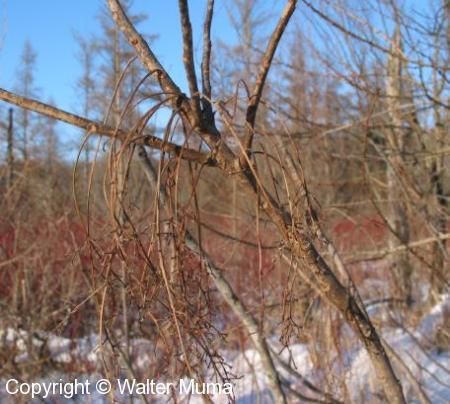
|
 |
Here's what the berry stalks look like in later winter after all the berries have either been eaten or fallen off. |
|
 |
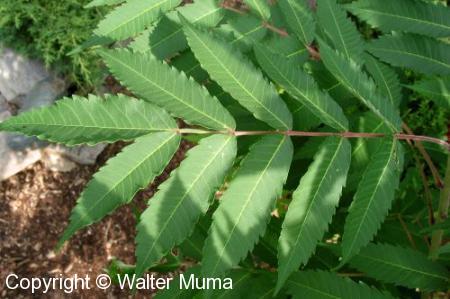
|
 |
For comparison, here is a photo of Staghorn Sumac (Rhus typhina) (NOT poisonous). Note the toothed (not smooth) leaflets. Staghorn Sumac is very common, and is not poisonous to touch. It grows in dry soils, so you will never find Staghorn Sumac growing side by side with Poison Sumac. |
|
 |
|
|  |
 |
|
| |